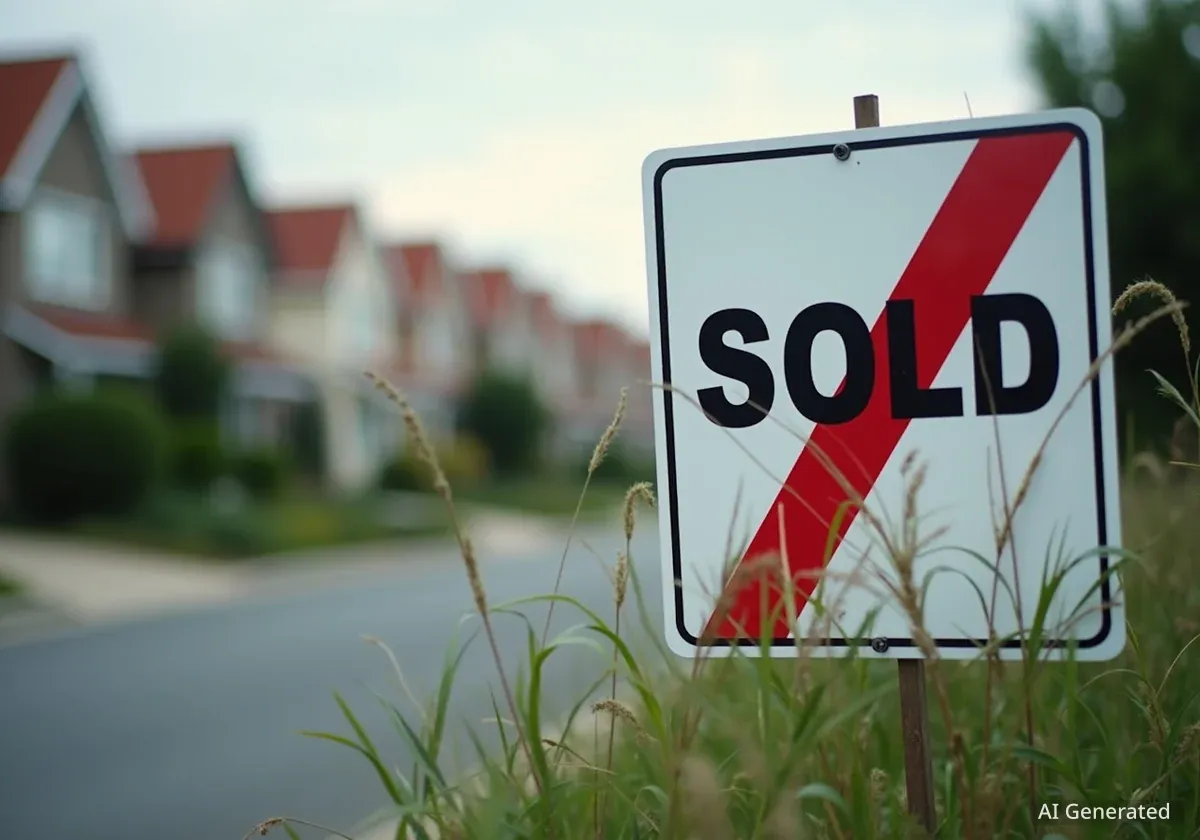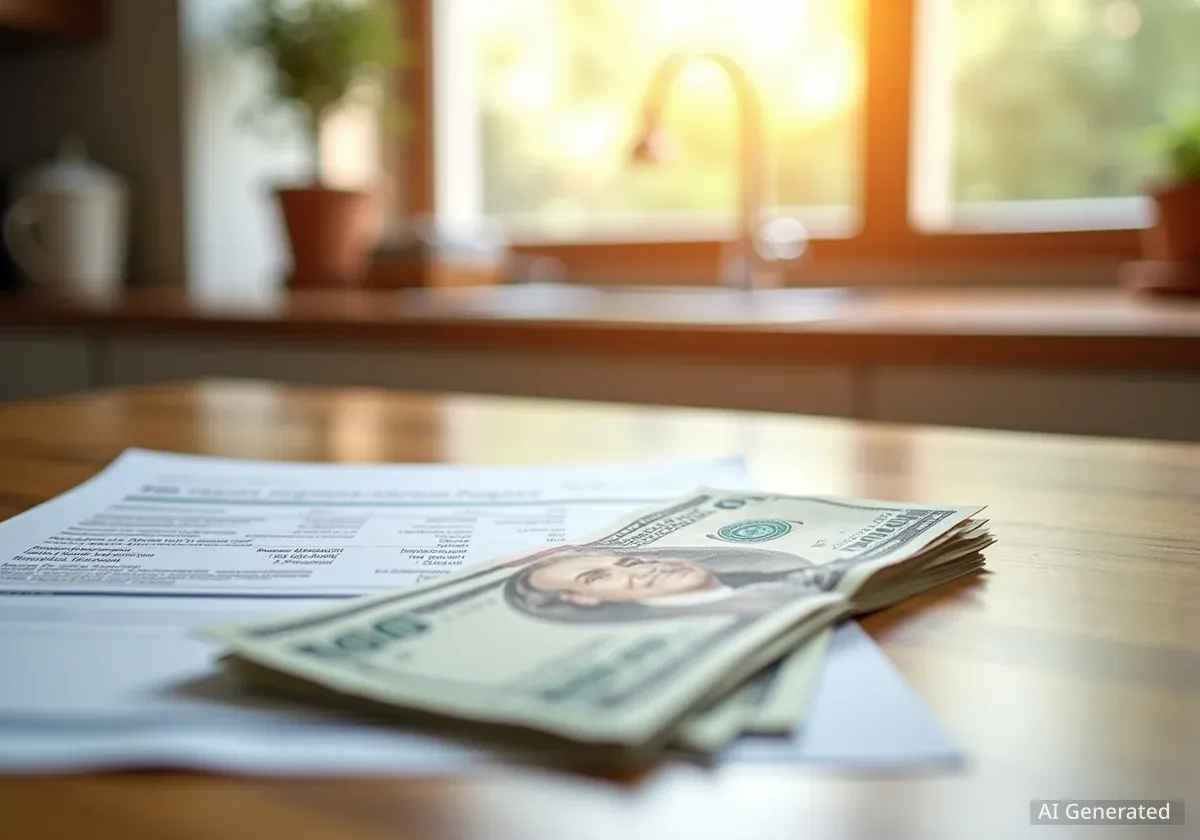The United States housing market is experiencing a significant slowdown as the Federal Reserve's aggressive interest rate hikes push mortgage rates to their highest levels in over a decade. This shift is directly impacting housing affordability, reducing buyer demand, and leading to a notable increase in housing inventory across the country.
Once characterized by intense bidding wars and rapid price appreciation, the market is now entering a period of correction. Prospective buyers face substantially higher monthly payments, forcing many to delay their homeownership plans, while sellers are increasingly adjusting their price expectations to attract a smaller pool of qualified purchasers.
Key Takeaways
- Mortgage rates have more than doubled over the past year, significantly increasing the cost of financing a home.
- Existing home sales have declined for several consecutive months, indicating a sharp drop in buyer activity.
- Housing inventory is rising as homes remain on the market longer, giving buyers more options and negotiation power.
- Price growth has slowed considerably, with some major metropolitan areas beginning to report month-over-month price declines.
The Federal Reserve's Role in Reshaping the Market
The primary driver behind the housing market's transformation is the monetary policy set by the U.S. Federal Reserve. In an effort to combat multi-decade high inflation, the central bank has implemented a series of substantial interest rate increases throughout the year. While these hikes are not directly tied to mortgage rates, they heavily influence them.
The Fed's actions raise the cost of borrowing for commercial banks, and these costs are subsequently passed on to consumers in the form of higher rates for mortgages, auto loans, and credit cards. The 30-year fixed-rate mortgage, the most common home loan product in the U.S., has seen its average rate surge from around 3% to over 7% in a relatively short period.
By the Numbers
A buyer purchasing a $400,000 home with a 20% down payment would face a monthly principal and interest payment of approximately $2,128 with a 7% mortgage rate. At a 3% rate, the same payment would have been just $1,349, representing a monthly cost increase of nearly $780.
This dramatic increase in borrowing costs has had a chilling effect on affordability. For many potential buyers, the dream of homeownership has been pushed out of reach, as their purchasing power has been severely diminished. According to the National Association of Realtors (NAR), this has led to a consistent decline in pending and existing home sales.
Buyer Demand Falters Under Affordability Pressures
The rapid rise in mortgage rates has effectively priced out a significant segment of the population, particularly first-time homebuyers who often have smaller down payments and tighter budgets. The monthly financial commitment required to own a home has become unsustainable for many, leading to a sharp pullback in demand.
"We've shifted from a market defined by overwhelming demand to one defined by affordability challenges. Buyers are stepping back to reassess their finances, and that's causing a necessary rebalancing of the market," stated a chief economist from a leading real estate brokerage.
This decline in demand is visible in several key metrics:
- Mortgage Applications: The Mortgage Bankers Association (MBA) has reported a steep drop in mortgage application volume, reaching lows not seen in over two decades.
- Showings and Open Houses: Real estate agents across the country report significantly lower foot traffic at open houses and fewer requests for private property showings.
- Bidding Wars: The once-common practice of multiple offers and bidding wars has become rare. Homes are now more likely to sell at or below the asking price.
This environment marks a stark contrast to the market conditions of the past two years, where a surplus of buyers competed for a limited number of homes, driving prices to record highs.
What Caused the Previous Housing Boom?
The housing frenzy of 2020-2021 was fueled by a unique combination of factors. The Federal Reserve cut interest rates to near-zero in response to the pandemic, leading to historically low mortgage rates. Simultaneously, a shift to remote work created new demand for larger homes, and fiscal stimulus measures provided many households with additional savings for down payments.
Inventory Rises as Homes Linger on the Market
A direct consequence of falling buyer demand is a rise in the number of homes for sale. As properties take longer to sell, inventory begins to accumulate, shifting the market dynamics away from sellers and more in favor of buyers.
The Seller's New Reality
Sellers who listed their homes expecting a quick sale and multiple offers are now facing a different reality. The average number of days a home stays on the market has increased substantially. According to data from real estate platforms, homes that once sold in under two weeks are now sitting for 30 days or more.
This change is forcing sellers to adapt their strategies. Price reductions, once uncommon, are now becoming a regular feature of the market. Sellers are also more willing to negotiate on terms, such as offering credits for closing costs or agreeing to make repairs requested by buyers.
The increase in available homes provides buyers with more choices and less pressure to make rushed decisions. This allows for more thorough inspections and appraisals, a return to more normal market conditions.
The Future of Home Prices and Market Stability
While the housing market is clearly in a correction phase, most economists do not anticipate a crash similar to the one experienced in 2008. The underlying fundamentals of the market today are significantly different. Stricter lending standards over the past decade mean that current homeowners are generally well-qualified borrowers with substantial home equity.
However, the trajectory of home prices is a key area of focus. Price appreciation has slowed dramatically from the double-digit annual gains seen previously. In many regions, prices are now flat or showing modest declines on a month-over-month basis.
Regional Differences
The housing correction is not uniform across the country. Markets that saw the most extreme price growth during the pandemic, such as Austin, Texas, and Boise, Idaho, are now experiencing some of the most significant price adjustments. In contrast, more stable and affordable markets in the Midwest may see less volatility.
The future direction of the market will largely depend on the Federal Reserve's ongoing battle with inflation. If inflation remains high, further interest rate hikes could push mortgage rates even higher, applying more downward pressure on home prices. Conversely, if inflation begins to subside and the Fed signals a pause in its rate hikes, the housing market may find a new equilibrium sooner.
For now, the market is in a period of transition. The era of rapid, unchecked price growth has ended, replaced by a more cautious environment where affordability and economic fundamentals are once again taking center stage. Both buyers and sellers must adjust to this new, more balanced landscape.





